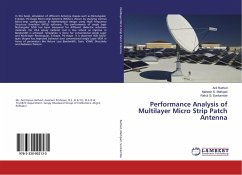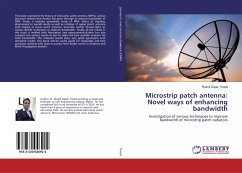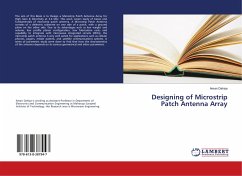
Fabrication and Performance Evaluation of Microstrip Patch Antennas
by Using Microwave Dielectric Ceramic Nanocomposite
Versandkostenfrei!
Versandfertig in 6-10 Tagen
40,99 €
inkl. MwSt.

PAYBACK Punkte
20 °P sammeln!
Microwave dielectric ceramic (MDC) is commonly utilized in millimeter wave ultra-fast wireless networks and intelligent transmission systems. This technology requires dielectrics with a high-quality factor (Q), a low dielectric permittivity ( r), and a low resonant frequency at almost zero temperature coefficients ( f). The recent revolution in microwave circuits has attracted the attention of the scientific community to design and fabricate an efficient antenna with reduced cost and size so that such devices can be integrated with the embedded system. Dielectrics are becoming expensive in the...
Microwave dielectric ceramic (MDC) is commonly utilized in millimeter wave ultra-fast wireless networks and intelligent transmission systems. This technology requires dielectrics with a high-quality factor (Q), a low dielectric permittivity ( r), and a low resonant frequency at almost zero temperature coefficients ( f). The recent revolution in microwave circuits has attracted the attention of the scientific community to design and fabricate an efficient antenna with reduced cost and size so that such devices can be integrated with the embedded system. Dielectrics are becoming expensive in the design of antennas. The length and width of the dielectric sheets shall limit to less area while preserving the original antenna performance metrics. There is a need to develop antennas with small sizes and low cost with good return loss, high gain, and radiation efficiency. Over the past several decades, the field of microwave-based wireless communication has seen a revolution, thanks to the use of dielectric/ceramic materials in the miniaturization of antennas with low-cost fabrication.












